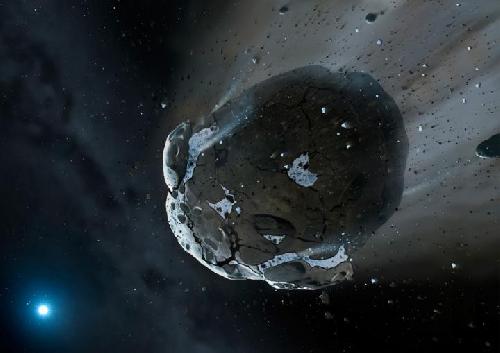For the first time, low cost production of a completely rare-earth free FeNi magnet with simple industrial technologyHard magnetic phase formed in natural meteorite achieved in significantly reduced time (from billions of years to maximum ten days)Issues related to rare-earth supply in production of high quality magnets potentially resolved, paving the way for industrial superiority in the production of future magnets
Researchers from Tohoku University in Japan have succeeded in producing a completely rare-earth free high-quality FeNi magnet. The team, led by Professor Akihiro Makino as principal investigator are supported by a MEXT (Ministry of Education, Culture, Sports, Science and Technology, Japan) project entitled, "Ultra-low Core Loss Magnetic Material Technology Area," under the framework of the "Tohoku Innovative Materials Technology Initiatives for Reconstruction."
Currently high quality magnets, which are used in various applications such as automobiles, household appliances, medical equipment etc. are made up of rare earth elements [Sm (samarium), Nd (neodymium), Dy (dysprosium) etc.]. Although the birthplace of these magnets is Japan, regulations for importing rare earth elements have become too political.
 This image shows a meteoroid. Credit: NASA, ESA, M.A. Garlick (space-art.co.uk), University of Warwick, and University of Cambridge.
This image shows a meteoroid. Credit: NASA, ESA, M.A. Garlick (space-art.co.uk), University of Warwick, and University of Cambridge.
Now, it is becoming increasingly difficult to maintain industrial superiority and competitiveness in the production of energy-saving technologies for next generation of electrical machines/devices. Thus, the development of new and innovative technologies for the production of highly functional magnets free from rare earth elements are most important and urgent issues, not only in Japan but all over the world.
It had been widely-known in the 1960s that small amounts of Fe-Ni magnets are included in natural meteorites (in an extreme equilibrium state) produced in the universe at an extremely slow cooling period of billions of years. And it had been impossible to produce artificially in a short time due to extremely slow diffusion rate of elements around the formation temperature.
But now, Makino's research group has succeeded in producing the magnet by utilizing high atomic diffusivity at low temperatures, when crystallizing from amorphous state. The effect is like travelling in a time-machine, ie. the time scale for the formation of a magnet is reduced from billions of years to just a couple days.
source: Tohoku University